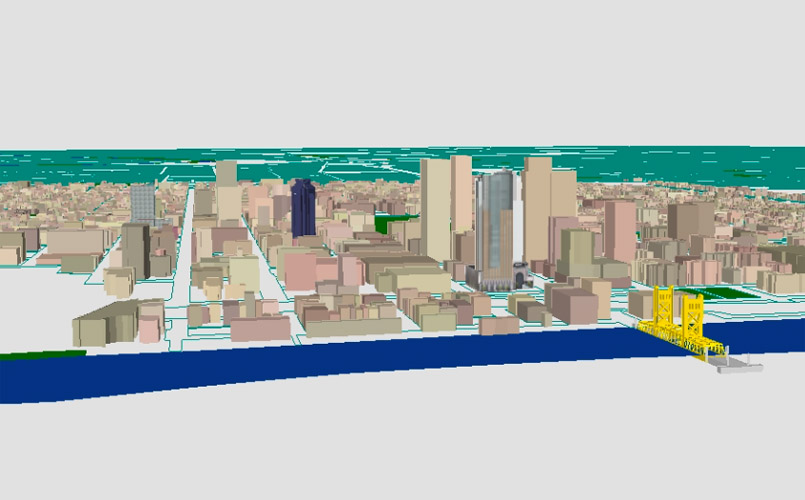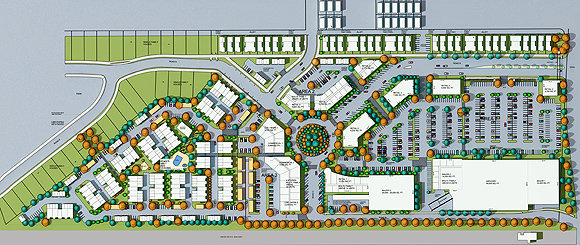
The Sacramento region has become a hotbed of growth and optimism. Seemingly overnight, the area is transforming from a somewhat sleepy city surrounded by nondescript suburbs to a vibrant, regional center. A similar transformation is underway at the Sacramento-based American Institute of Architects Central Valley Chapter (AIACV).
More than sixty-three years old, the AIACV has historically served its members well by providing continuing educational programs, a biennial design awards competition, annual golf and tennis tournaments, licensing seminars, and a forum for social interaction through monthly meetings often in the form of building tours. Like the region it serves, the Chapter leadership awakened a few years back, took stock of the challenges and opportunities faced by its members, and made a conscious decision to become a leadership resource to the region as it faces dramatic and pressing change.
The Region Undergoes Rapid Transformation
According to the Sacramento Area Council of Governments, the population of the six-county Sacramento region is projected to increase from it current 2 million to 3.8 million residents in the next fifty years, with the number of homes doubling from 713,000 to 1.5 million. The City of Sacramento is emerging as the valley’s cultural and entertainment center. A vibrant restaurant- and nightlife is evident now on the weekends and is spreading to other days of the week. For the first time, downtown Sacramento has become a destination and a desirable place to live, as evidenced by the numerous high-rise residential projects that are in the works, including a project designed by Daniel Liebeskind, FAIA, and two, fifty-two-story residential twin towers at the base of Capitol Mall. Attracted by a slower pace of life and relatively affordable real estate prices, Bay Area transplants are finding their way to the “Big Tomato.”
Growth is always a double-edged sword, bringing both opportunities and challenges. As one of the few remaining frontiers in California, with vast amounts of relatively inexpensive and unspoiled land, Sacramento and the surrounding region are uniquely situated in both time and place. To be successful, they must glean the richness and diversity that growth can bring, while at the same time avoiding the architectural and regional planning errors made by other jurisdictions.
The AIA Central Valley Emerges from Hibernation
A few years ago, the AIA Central Valley Chapter took a hard look at itself and determined it was relatively irrelevant to the community. As an organization, it was not “at the table” when critical decisions were being made. Civic and government leaders sought out other allied organizations and community activists for input on crucial decisions, as the AIA, when asked, was generally silent. Architects, when they did speak, did so individually or own behalf of their firms. The architectural profession did not have an organized, cohesive presence in the community. The average citizen had no notion of why or how the AIACV, or its members, might be important forces in shaping the region.
Recognizing its civic obligation to contribute, the Chapter began a concerted effort to become involved in important regional issues. It reached out to the community to form strategic alliances with allied organizations and important civic, business, and community leaders. Its executive director set aside some of the more routine duties associated with running a chapter and began attending City Council and other meetings, speaking on the Chapter’s behalf on important matters, or offering professional assistance to the community. It did not take long for the Chapter to gain recognition for its increased presence in the community and for initiating a number of exceptional programs that are already making a difference.

A Unique Marriage Is Formed
Earlier this year, the AIACV and the Environmental Council of Sacramento (ECOS) formed the “Smart Growth Leadership Council,” in order to encourage and recognize development projects that incorporate smart growth principles. Under this program, developers voluntarily submit their projects to be evaluated against written smart-growth guidelines drafted and approved by both organizations. If the project meets the guidelines as sufficiently “smart,” the project receives a letter of endorsement from the Council that can be used to assist with marketing and the entitlement process. If the project does not initially receive a favorable review, the developer is given an explanation and invited to resubmit after improvements have been made.
To date, two in-fill projects have received the Council’s endorsement. The first was Curtis Park Village, a seventy-acre PUD on a hundred-year-old rail yards brownfield site designed by Kuchman Architects / Philip J. Harvey, AIA / ac martin partners. Despite the multi-million dollar toxic clean-up undertaken by the developer and the creation of a variety of housing options that are not currently available in the neighborhood, the project has faced some opposition from neighborhood activists, primarily on traffic-related issues. Because the Council’s endorsement will be a useful tool when the proponents seek their entitlements in 2006, certain improvements to the project were voluntarily made.
The second project to receive the Council’s endorsement was an eight-story, mid-rise residential and neighborhood retail, mixed-use project in midtown Sacramento—an older residential/commercial area adjacent to downtown with a number of historically significant homes and a distinctive urban flavor. The project, designed by Ankrom Moisan Associated Architects of Portland, introduced cutting-edge architecture to the neighborhood. Again, a few neighborhood activists sought to block the project. When the Planning Commission’s approval was appealed to the Sacramento City Council, the Smart Growth Leadership Council’s endorsement played a significant role in the City Council’s unanimous decision to allow the project to go forward.
By partnering with an environmental organization known for controversy and opposition to projects, the AIA Central Valley is offering the development community a balanced perspective and an innovative incentive to incorporate smart growth principles into projects. The result is something greater than either organization could have achieved on its own.
Helping Shape the Central Business District
The Sacramento Central Business District is the roughly 400-block area centered on the State Capitol. Despite numerous civic- and business-led efforts over the years to jumpstart the area economically, the downtown environs was a virtual ghost town after the five o’clock exodus of state workers. At the root of this lack of energy and nightlife was the scarcity of downtown housing—in particular the kind of housing choices that might bring people back from the suburbs to the City’s urban core.
In the last few years, a confluence of changes in market and perception has resulted in a number of proposals for high-rise residential projects in the downtown area. As a whole, these will dramatically alter the existing skyline and the City’s demographic geography. Unfortunately, the City’s eighteen-year-old design guidelines for the central business district were drafted at a time when high-rise, high-density residential development was so far fetched as to have not been seriously addressed. As a consequence, some of the proposals, while technically adhering to the design guidelines, were viewed by many in the architectural profession as seriously flawed. Given the legacy these structures would leave, the Chapter launched the Design Advocacy Taskforce (DAT) whose purpose is to assist local government in assessing these city-shaping projects.
The Taskforce is comprised of Chapter members who have expressed an interest in reviewing major projects about to undergo the City’s design and planning review. The Chapter notifies its members of upcoming public hearings and provides access to the staff reports prepared by City personnel. The Chapter also obtains and makes available a copy of the developer’s submission packet to Taskforce members who wish to view it, either individually or in a forum organized by the Chapter. Taskforce members are also encouraged to provide either written input on the proposed project for inclusion in the public record or to address the permitting entity at public hearings. A procedure by which the Chapter itself may take an official position relative to a particular proposal or issue is currently being discussed.
By speaking out on significant projects, some of which have been designed by Chapter members, the Design Advocacy Taskforce is entering relatively uncharted territory but providing valuable, professional input to civic leaders.
Developing a Center for Collaboration
Realizing that the transformation of Sacramento into a great urban center will require the efforts of a number of related disciplines working closely together and a partnering of civic and private enterprise, the AIA Central Valley is also at the beginning stages of developing a collaborative design education center. This shared facility is envisioned as bringing together, in one place, a number of public benefit and nonprofit organizations that attempt to influence the shape of the built environment. As an educational resource where the public can learn about good design, livable communities, smart growth, and sustainability through gallery exhibits, lecture series, and an informational repository, the AIACV envisions this center as an important resource not only to members of the various organizations but also to community leaders and the public at large. By sharing common facilities and perhaps staffing, the center may offer each of the participating organizations efficiencies and opportunities that would not exist operating independently of each other. Intended for an urban setting undergoing revitalization, the center will put into direct action some of the principles the AIACV espouses.
Putting the Pieces into Place
Change takes time and effort. Charting its new course has taken the Chapter four years, and it is still a work in progress. A new executive director has brought passion and vision, but the changes have been deliberate and thoughtful. Through events such as breakfast roundtables, the Chapter has sought to inform its members and engage them in the new direction upon which it has embarked. As the Chapter adds new initiatives and assumes a greater role in the region, further change will be inevitable. Within the next few years, the AIACV hopes to be a dynamic organization, actively engaged in shaping the region, well known and respected by government and business leaders and the public at large. Relevance, after all, is the reason it began its transformation.
Co-author Phyllis A. Newton, Esq., is Executive Director of the American Institute of Architects, Central Valley Chapter. Co-author Michael Malinowski, AIA, is a member of the board of AIACV.
Originally published 4th quarter 2005 in arcCA 05.4, “Sustain Ability.”





